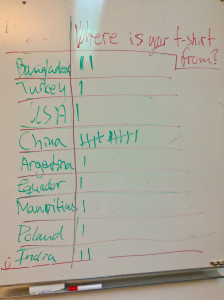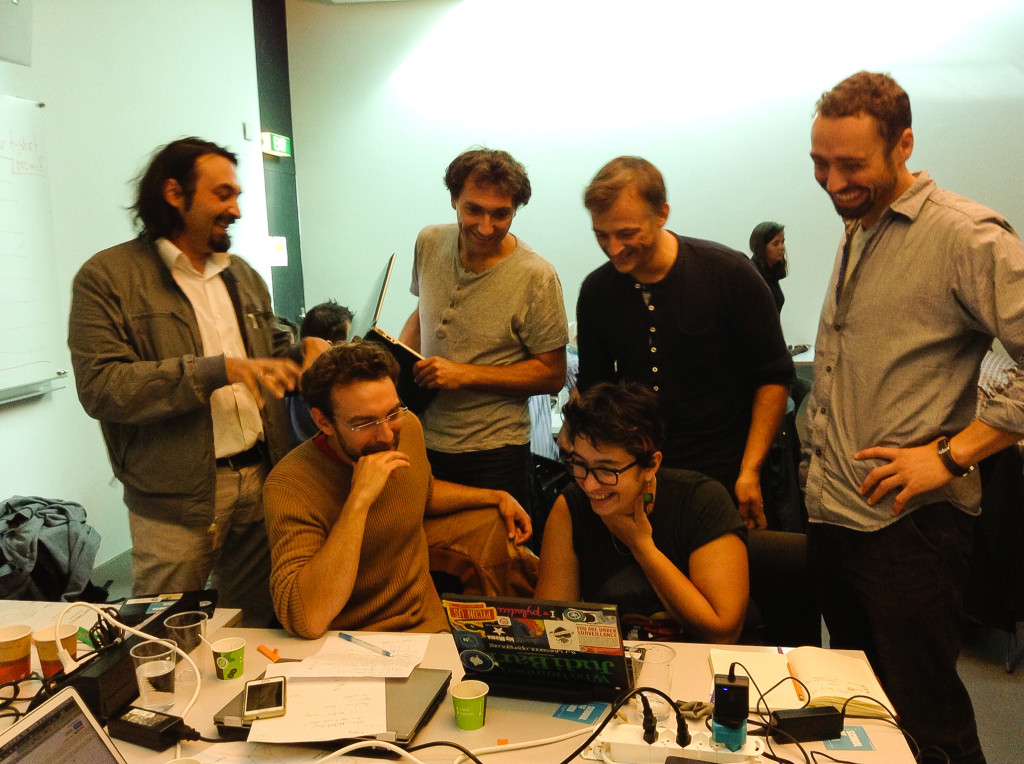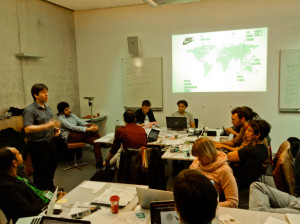Learn how to run your data expedition
Last week the School of Data team was in Geneva facilitating a data expedition on garment factories during OKCon. Our aim was to teach people how to run their own expedition but we ended up learning a lot ourselves.
Rather than sharing the outcomes, which deserve several blog posts on their own, I will share now some reflections on the process of organising a data expedition:
###Introduce the topic and the data

A data expedition needs a sexy topic and a good data set. Choose the topic well in advance, make sure you have a good dataset to start with and get an expert to introduce the topic during your expedition. This is someone who feels passionate about the topic and who can inspire participants and answer their questions. Ideally this person should also be able to give a proper introduction to the data set, including some notes on data collection methods, assumptions, red flags, etc.
###Break the ice
Think creatively of how you want people to introduce themselves. Given that we were talking about garment factories, we ran a small mapping exercise asking people where their t-shirts were made. To no surprise, we found that no country is second to China in this area.
###Get people to work in small groups
We had roundabout 30 participants in the room so we decided to split them in smaller groups. We wanted our groups to have a fair diversity of skills so that people can learn from each other. Before splitting we asked them to fill in the character sheets (front, back) and map their skills along these lines: storyteller, analyst, engineer, scout and designer. This is how we ended up with 4 groups of around 7-8 participants.
Observing our groups dynamics, it was quite obvious there was a strong correlation between the size of the group and how well they communicated. It seems the ideal group size is 5-6 and with more participants, people will naturally split in smaller groups (although it might take them some time to realise this so facilitate it!)
###Messy is OK!
This is my favourite statement from our expedition and a fantastic reflection on group dynamics. We allowed groups to organise themselves with minimal facilitation. Some managed to sort themselves out immediately and some realised just at the end how much time they lost because of lack of communication. This was a learning experience in itself!
Some observations:
-
Don’t underestimate the first 30 min of your group work. Allow time for people to understand the strengths and weaknesses in the group, get familiar with the topic and strategise how to go ahead. You can give people pre-defined tasks but sometimes it might work best if groups to choose what they want to work on.
-
Encourage people to connect online so they can easily share resources
-
Have an online document ready where all groups can share the outcomes
-
Ask someone in each group to take some notes, especially if you want them to reflect on the process and perhaps organise data expedition of their own!
###Tools & tutorials
Depending on how much time you have for your expedition, you might want to include space for mini tutorials. You’d be amazed how much your participants know! Why not giving them a corner of the room (or another room if available) where they can share their skills with other participants. If you know your participants beforehand, this can be orchestrated in the run up to your expedition.
You might also want to have a flipchart somewhere where you map demand and offer for some mini skills share sessions.
###Time
We had 3 hours for our session, divided as following: 30 min for introductions focused on topic and data, 2 hours for group work and 30 min for wrap up. Obviously more time would have been fantastic, but we managed nonetheless to have a small but full scale investigation and great outcomes from each group.
###Just the beginning
As with all the other expeditions we ran so far, we realised it was just the beginning. The data expedition was enough to get people to know each other, learn from each other and stimulate their interest in the topic. We hope our participants will keep in touch and engage further with the garment industry exploration.
###Take it with a pinch of salt!
Last but not least, remember a data expedition is a learning experience so don’t take it so seriously. Make sure you always include a good dose of humour and encourage a light atmosphere where people feel comfortable to share ideas and listen to others!



